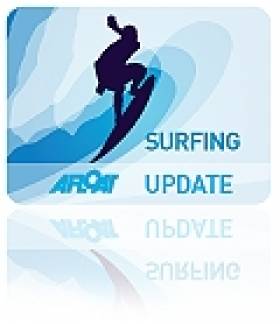Displaying items by tag: Bulletin TV
Rossnowlagh Surfing to Feature in New RTE Show
Aidan Power and newcomer Daniella Moyles guide viewers around the pulsating world of heroes, music, fashion and high energy sports meeting some of the worlds brightest stars and biggest risk takers along the way.
Aidan and Daniella delve deep into the world of culture and cover everything from rising music performers and fashion designers to getting down and dirty with Ireland's graffiti artists.
Bulletin TV will bring you through the USA, Switzerland, Austria and Italy as well as travelling the length and breadth of Ireland to experience firsthand events such as Rossnowlagh Irish Intercounties Surfing Championships and The Red Bull X Fighters. Along the way they meet Irish & international athletes and find out what dBUerives them beyond the amazing to achieve the incredible.
In programme 1, Aidan catches up with Ireland's top female surfer, Easkey Britton as she leads an all-girl team in the Rossnowalgh Intercounties Surfing Championships in Donegal; Daniella finds out from Karina Hollekim if BASE Jumpers are really as crazy as they seem; David Coultard burns rubber in Belfast City Centre; Keith Walsh tells us of the pain of skateboarding; with the help of Isaac Newton, Travis Pastrana jumps his car 82 meters in the air and Akte Blani demonstrates that if you don't like your seat on a plane you should move....to another plane.
In programme 2, Daniella joins one hundred motorcross and enduro riders as they do battle over the original steeple chase route in Co. Cork; Aidan talks to Felix Baumgartner about his plan to be the first person to break the sound barrier without a vehicle; Mountain Biker Aaron Chase tells us what his spinal chord and a doughnut have in common; and Daniella catches up with award winning Irish fashion designer Amanda Grogan.
So, sit back, belt up and enjoy the world of extreme sports and culture with Bulletin TV. It promises to be an unforgettable ride.
Bulletin TV is a fully funded television series produced by COCO Television for Red Bull Media House GmbH.
























































